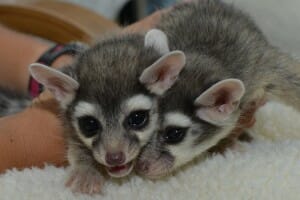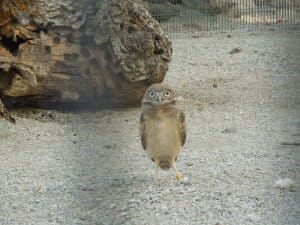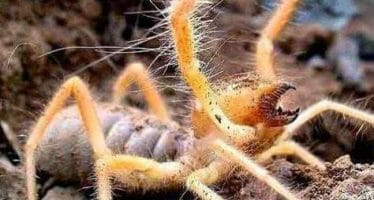THREE BURROWING OWLS PLUS A RINGTAIL CACOMISTLE EQUAL MORE FUN AT THE LIVING DESERT

THREE BURROWING OWLS PLUS A RINGTAIL CACOMISTLE EQUAL MORE FUN AT THE LIVING DESERT
PALM DESERT/INDIAN WELLS, CA – (September 19, 2014) – The sounds of wildlife at The Living Desert are now joined by the hoot of three newborn Burrowing Owls and the clamor of a baby Ringtail cub.
“These owlets and the cub are small in stature but big in popularity with our guests,” said Allen Monroe, President/CEO of The Living Desert. “We are excited that the Babies in Bloom keep coming here at The Living Desert. It’s been a wonderful spring and summer.”
Three Burrowing Owls joining the group, or parliament as they are most commonly referred to, hatched on June 7, 8, and 9 at The Living Desert and were raised by their parents. One of the young females will be paired with another owl, next to her parent’s enclosure. In partnership with the American Zoo Association, the other two will be sent to other institutions in the fall.
Burrowing Owls have atypically long legs that help them sprint after their prey, along with their usual airborne hunting tactics. This ability allows Burrowing Owls to be exceptionally adept at hunting. They are one of the few species of owls that hunt during the day and have an incredibly varied diet. Burrowing Owls are only about 10 inches tall with a wingspan approximately double their height.
In addition, a female Ringtail cub was born on June 22. Ringtail Cacomistle are squirrel-sized animals related to the raccoon, with a long and fluffy, black and white tail. Native to the desert, they range from 25 to 30 inches long, half of that attributed to the tail, and weigh about two pounds. Nocturnal and omnivorous, they prefer rodents, birds and lizards, but also will eat plants and berries. Once trapped for fur, these animals are now protected by law in California and can live from six to nine years in the wild and even longer in captivity.
About The Living Desert:
The Living Desert is an AZA-accredited zoo and gardens that is dedicated to conservation and education. It is a family-friendly place to explore nature and create meaningful experiences for guests that are remembered for a lifetime. For more information: (760) 346-5694 or visit www.LivingDesert.org. The Living Desert is located at: 47900 Portola Avenue, Palm Desert, CA 92260.
The Living Desert is open daily June 1 to September 30 from 8 a.m. to 1:30 p.m. and October 1 to May 31 from 9 a.m. to 5 p.m. Admission ranges from $8.75-$17.25 (children under 3 are free). Membership prices begin at $55 for an individual and $100 for a family of four and includes early admission, discounts, special events and more.
Related Articles
Sun Spiders, Yes these critters do live in the Coachella Valley
Sun spiders are not Spuders at all. And yes, these critters do live in the Coachella Valley and yes
Are Rattlesnakes in the Coachella Valley Out of Hibernation?
CoachellaValley.com ‘s very own Jill Hayes had the scariest encounter of her life while hiking in Palm Springs. By
A Donkey on Roller Skates in Indio…What?
Coachella Valley Did You Know? In Indio, Ca, 1960 that People parked at the curb line along the




